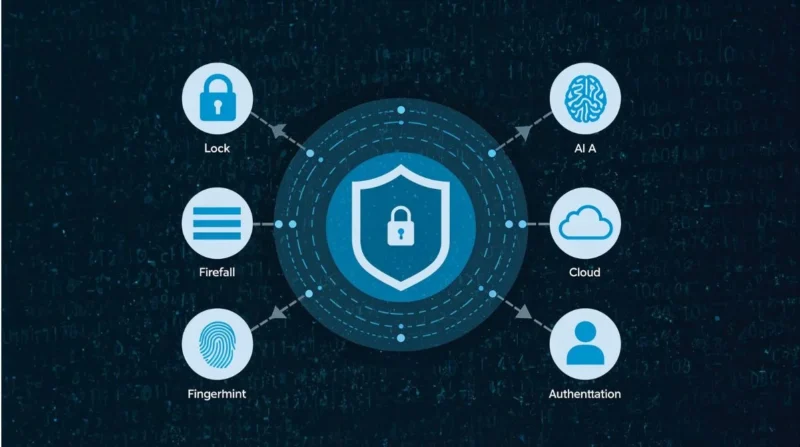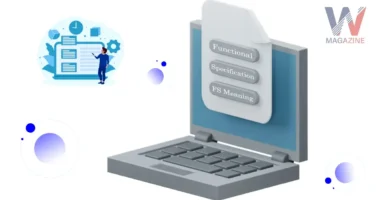Table of Contents
- Why Cyber Security Matters More Now?
- Common Cyber Threats You Should Know
- Five Layers of Cyber Security
- Best Practices to Stay Safe
- Cyber Security Trends for 2025
- Building a Strong Cybersecurity Plan
- Cyber Security for Everyday Users
- Real-World Impact: Cyberattacks on Retail
- Staying Ahead with Cyber Security
- Conclusion
In today’s world, almost everything is online, from work and school to shopping and social media and that makes cybersecurity more important than ever. Cybersecurity means protecting computers, smartphones, networks, and data from bad actors who want to steal information, cause damage, or demand money. When it’s strong, it keeps your email, bank account, photos, and private files safe . Cybersecurity has three key goals: keeping data confidential (only for those who should see it), ensuring integrity (data isn’t changed without permission), and making sure systems stay available . When these are in place, everything runs smoothly and nobody gets hurt by leaks or interruptions.
Why Cyber Security Matters More Now?
Cyber threats are climbing as our lives become connected, everyone uses the cloud, and work-from-home is now normal . Cybercriminals are smarter and use new tools like artificial intelligence to launch phishing, ransomware, or supply chain attacks . In 2025, many retailers and service companies saw breaches that shut down operations and put customers at risk.
Governments are responding with stricter rules, such as the U.S. asking contractors to follow new cyber rules, and the EU launching systems like the European Vulnerability Database . These changes show regulators are taking cyber risks seriously.. Everyone is vulnerable from large banks and government systems to small businesses and home users. Strong cyber hygiene, such as using good passwords and authentication, helps protect both personal and business information .
Common Cyber Threats You Should Know
Cyber threats come in many forms, and knowing them helps you stay protected:
- Malware includes viruses, trojans, ransomware, and spyware intended to harm or capture your data .
- Phishing tricks you into giving passwords or information by pretending to be someone you trust.
- Ransomware locks your files unless you pay money.
DDoS attacks flood networks with traffic to shut them down. - Insider threats are security problems caused by people inside a company by mistake or on purpose.
- Being aware of these threats is your first line of defense.
Five Layers of Cyber Security
Cybersecurity should be multi-layered. Here are the key areas to protect:
1. Device & Endpoint Security
Use antivirus, firewalls, and real-time monitoring to guard laptops, phones, and servers
2. Network Protection
Secure Wi-Fi, use VPNs, and set up IDS/IPS systems to monitor traffic and block attackers .
3. Data Security
Encrypt sensitive files and use strict access controls
4. Application Safety
Keep software up to date, scan for vulnerabilities, and follow secure development practices .
5. Human Awareness
Train staff (and yourself) to recognize phishing, use strong passwords, and follow protocols. For businesses, frameworks like NIST CSF and CIS Controls help put these layers together
Best Practices to Stay Safe
Here are proven habits and tools for better cybersecurity :
- Use strong, unique passwords and a password manager.
- Turn on multi-factor authentication (MFA) everywhere.
- Update software and patch systems regularly to fix vulnerabilities .
- Be cautious with email links and attachments, and learn to spot scams .
- Backup your data securely in multiple locations .
- Use zero-trust, always verify, never trust by default .
- Deploy AI tools for real-time threat detection and response.
- Monitor systems and have an incident response plan ready.
Cyber Security Trends for 2025
As threats evolve, here’s what to expect:
- AI-driven attacks such as deep fake scams and automated malware are growing.
- Adaptive and ML-based firewalls change rules in real time.
- Zero-trust architectures require strict permissions everywhere .
- Quantum-resistant cryptography begins to roll out to block future attacks.
- Regulations are increasing, including the EU’s Cyber Resilience Act and NIST updates.
Building a Strong Cybersecurity Plan
Follow these steps to build a solid foundation:
- Assess Risks: Identify key assets and risks using NIST or other frameworks .
- Set Policies: Define password rules, access levels, and acceptable use.
- Deploy Tools: Use firewalls, antivirus, encryption, and AI-based detections.
- Train People: Run phishing tests and awareness programs.
- Monitor & Audit: Track events, logs, and access for suspicious activity.
- Prepare Response: Have an incident response and recovery plan in place.
- Review & Update: Perform regular audits, drills, and update policies annually.
Cyber Security for Everyday Users
You don’t need to be a tech expert to stay secure :
- Stay updated with system and app patches.
- Use MFA for banking, email, and social accounts.
- Use strong passwords and a manager to avoid reuse issues.
- Watch for odd emails and texts, and verify senders.
- Backup your photos and documents in the cloud regularly.
- Be careful on public Wi-Fi; use a VPN when needed.
Real-World Impact: Cyberattacks on Retail
Retail companies have faced major cyberattacks that disrupted stores and exposed customer data. These incidents highlight the importance of protecting point-of-sale systems, supply chains, website infrastructure, and customer data with layered defenses and incident response plans.
Staying Ahead with Cyber Security
Cybersecurity is a shared responsibility between technology, policies, and people . While attackers are fast and creative, defenders can keep up using AI for detection, zero-trust models, and strong regulations. In the end, it’s about being proactive, improving over time, and adapting to new threats.
Conclusion
Cybersecurity doesn’t have to be overwhelming; it’s built on simple, effective habits combined with smart tools. By protecting your devices, networks, apps, data, and people in layered ways and staying informed on 2025 trends, you can greatly reduce your risk and sleep better knowing you’re safer in a digital world.
Related Topic:









